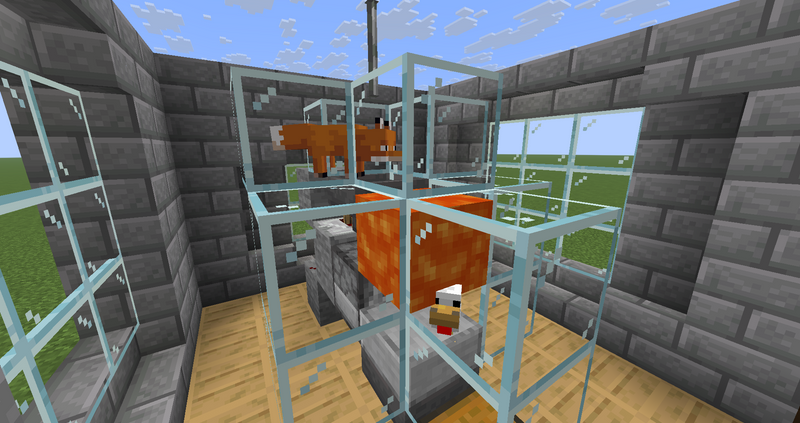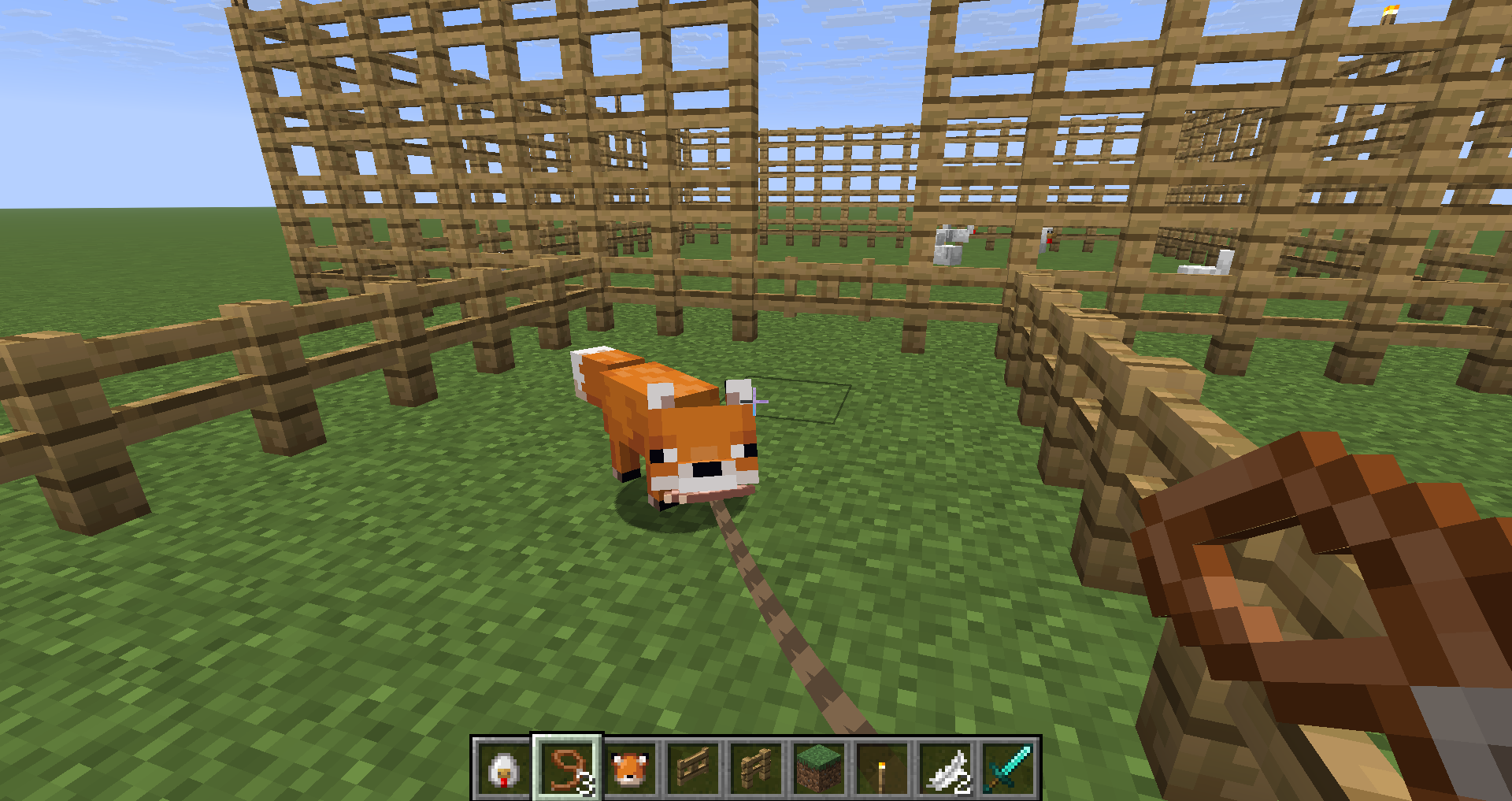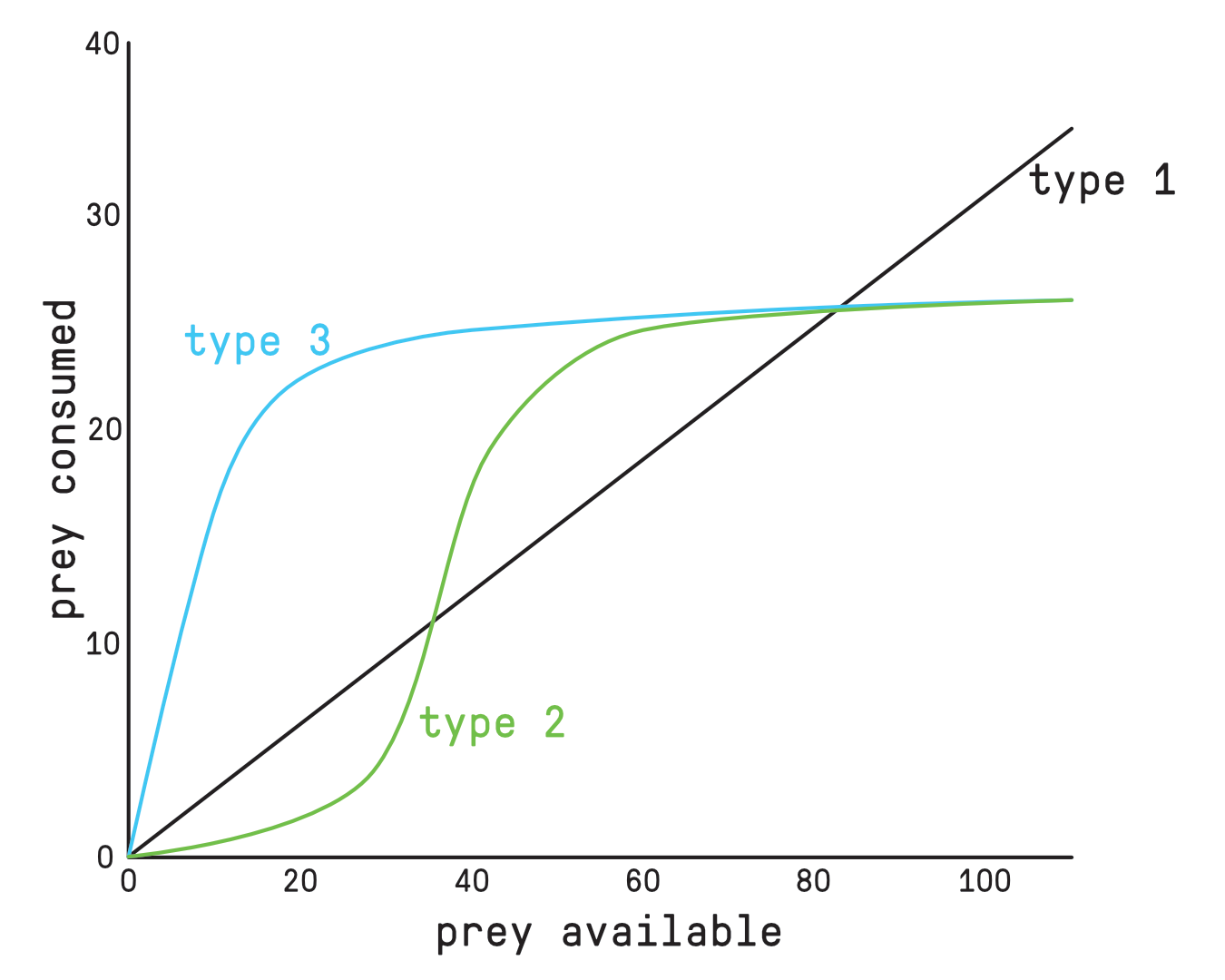🦊How Hungry are Foxes in Minecraft? 🍗

Have you ever rage-quit coming back from a mining trip to find a fox got into your farm and killed all your chickens? 😤 Or maybe you’re better at fox-proofing your farms than I am…
But this isn’t just a Minecraft problem, farmers IRL deal with it too. Foxes 🦊 (Minecraft and real-life) are a predator, hunting chickens 🐔 which are their prey (or target). All animals will have their own predator-prey relationships (think lions hunting wildebeest on wildlife documentaries) which affect how many animals are in the habitat. So understanding these relationships are crucial for conservation scientists and ecologists (the scientists who study nature) to keep ecosystems balanced.
This resource will talk you through an in-game experiment to help us understand the ecosystems inside Minecraft. We tested this in Minecraft: Java Edition version 1.21.10.
🌳 Ecology caps on! 🎓
🛑 Chicken Apocalypse: The Aftermath
🧠 Brainstorming solutions
How would you prevent your chickens from going extinct?
There are plenty of ways to answer this question and I encourage you to experiment in your world! This worksheet will guide you through one of the tools ecologists can use.
What factors will affect how many chickens are left when foxes attack?
A super basic factor is how many chickens there are to begin with. Maybe we should just breed so many chickens that a fox can’t eat them all quickly enough.
How would you find out how many chickens a fox can eat?
We need to be methodical like a scientist 🥼 Maybe we could put a fox in an enclosure with a set number of chickens and see how many chickens it kills 📉 We could start with a small number of chickens and increase it until a fox can’t kill them all.
This is what ecologists call a functional response experiment. So let’s head into a Creative world and do a that with our foxes and chickens!
🏗️ Lab Prep: Building the Battle Arena
🎮 GO TIME! Run the Experiment
Each round of the experiment will run like this:
- Chicken drop 🐣: Spawn x number of chickens on random blocks around the arena (we’ll explain more later).
- Release the beast: Open the gate to let the fox in and start the timer.
- Battle time: Let the fox hunt the chickens for 2 minutes. (You can change the amount of time, as long as it is the same for each round)
- Round End: Once the timer buzzes, use the lead to quickly drag the fox back into the holding cell. CLOSE THE GATE! 🔒
- Data entry: Count and record (table below or your own method) the surviving chickens 🐓
- Calculate: Figure out the kills (Chickens provided – Chickens alive)
- Reset: Pick up all the feathers and raw chicken drops. Prepare for the next round with a new batch of chickens.
💯 The Scoreboard
You can use the table on the printable worksheet or make your own
| Round | 🍽️ Number of chickens provided |
💪 Number of survivors |
💀 Number of chickens killed (chickens provided – chickens alive) |
⚖️ Kill ratio (chickens killed / chickens provided) |
|---|---|---|---|---|
| 0 | 0 |
|
||
| 1 | 2 |
|
||
| 2 | 4 |
|
||
| 3 | 8 |
|
||
| 4 | 16 |
|
||
| 5 | 32 |
|
||
| 6 | 64 |
|
📈 Your Functional Response Graph
We need a graph!
You can use square or graph paper, the graphing function in a spreadsheet app, or (if you’re good at coding) in Python.
- Horizontal (x) axis: number of chickens provided
- Vertical (y) axis: number of chickens killed
- Plot your data points and join them up with straight lines.
❓ Interpreting the Curve: The Biology Behind the Blocks
In the example graph, ecologists have categorised 3 general ‘types’ of functional response. Which shape does your graph look like?
Does the graph remind you of any other biological systems you learnt about in school?
Let’s think about the biology, why might the curve flatten at the top? It might help to think about why you can’t eat 10 pizzas 🍕 in one go.
Prey side: what would make prey easier or harder to kill / consume? How would this affect the curve?
What does this experiment tell us about our chicken farm ecosystem?
What can we do to improve the experiment?
🖥️ Are we living in a simulation?
What you just did is run a simulation. Scientists IRL use these types of computer models to understand things like population changes, disease spread, and climate change effects.
To create a simulation, ecologists will approximate a set of real-world parameters as rules. These rules are coded into software and then run.
🎮 Minecraft is already a simulation! Mojang wrote the parameters (rules) for mob behavior; foxes jump, chickens run, foxes kill at a certain rate. By running the experiment, you were using the game's code to proper science 🎉
🌐 Research simulations and models online
Why are simulations so powerful for scientists? (Hint: Can you test a world-ending event IRL? Nope.)
What would happen if we changed some of the parameters? Can we do that IRL?
What's the difference between the fox in your game and a fox in a real forest 🌳?
Why can't we use Minecraft for all ecology experiments?
🏞️Extension: Park Ranger Quest
You are the head ranger of a Minecraft nature reserve. Your goal is to create a sustainable population of free-roaming chickens 🐔, rabbits 🐰 and foxes 🦊 in a natural biome.
🗺️ Quest deets
🔎 Look up some IRL conservation techniques and try them in your own world in Minecraft!
What could you do with the organisms to help maintain this? These are what ecologists call biotic factors.
How about the terrain and habitat (abiotic factors)? Could you make some changes to the habitat to tilt the balance in one way or the other?
How is understanding functional response useful (or not) for this task?
What other things do we have to consider when protecting an ecosystem?

Gina Vong
Disclaimer
This free educational resource is not an official Minecraft product/service and is not approved by or associated with Mojang or Microsoft.




